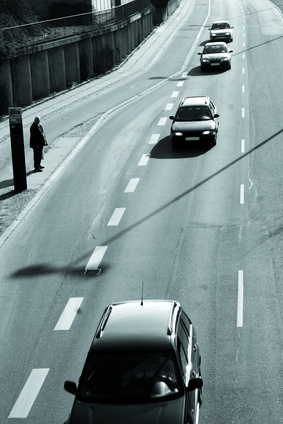
Rear-end collisions are the most frequently reported kind of automobile accident in the United States, according to the website 24-7 Press Release, which notes a National Highway Traffic Safety Administration statistic of about 2.5 million rear-end accidents a year. Leading causes of rear-end collisions include tailgating, negligent behaviors such as cell phone use while driving and failing to remain alert.
One of the main things drivers can do to avoid rear-end collisions is to maintain a safe following distance. A two-second following rule is recommended for passenger vehicles. When the vehicle ahead passes a marker, such as a lamppost, the driver of the car that is following should count "One thousand one, one thousand two." Reaching the lamppost after counting "one thousand two" means that the following car is a safe distance from the lead car. Truck drivers should use a four-second following rule, because heavier weight necessitates a longer stopping distance.
An increasing element of driver negligence involved in rear-end accidents involves the use of cell phones while on the road. The website Science Daily says that drivers who are talking on cell phones have double the odds of a fender bender. It notes that cell phone use while driving leads to mistakes such as tailgating, running red lights, speeding and failure to yield to other vehicles. Other examples of negligence leading to accidents include preoccupation with the car's radio or navigation system, or driving while under the influence of drugs or alcohol.
Daydreaming is a prime ingredient in rear-end accidents. Being alert means forcing oneself to stay aware of potential hazards in front, behind and all around one's vehicle so that it is possible to avoid accidents. Some people call this "defensive driving." The official Honolulu website refers to it as "planning ahead" and suggests a pattern of roadway scanning that involves regular checks of all three rear-view mirrors as well as quick peeks at gauges and the speedometer. Furthermore, it says to be prepared for potential problems at intersections and for traffic-signal changes.